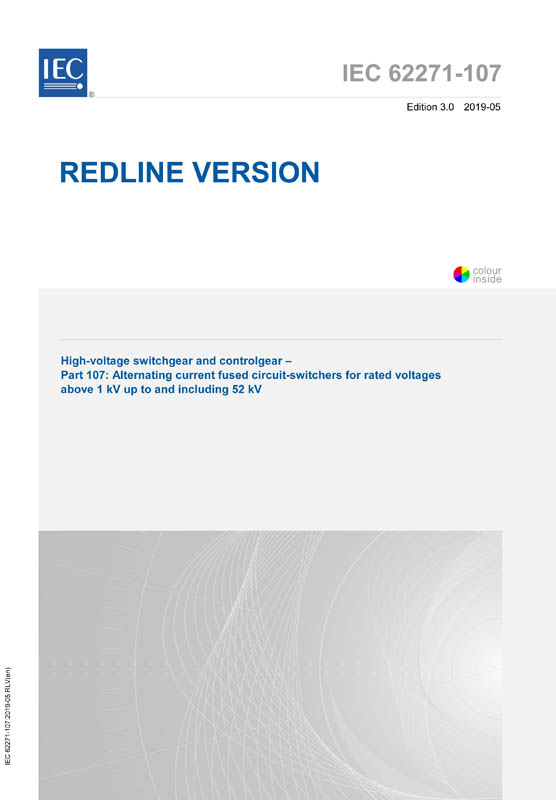IEC 62271-107:2019 RLV
High-voltage switchgear and controlgear - Part 107: Alternating current fused circuit-switchers for rated voltages above 1 kV up to and including 52 kV
Ausgabedatum:
2019-05
Edition:
3.0
Sprache: EN - englisch
Seitenzahl: 171 VDE-Artnr.: 247711
IEC 62271-107:2019 RLV contains both the official IEC International Standard and its Redline version. The Redline version is available in English only and provides you with a quick and easy way to compare all the changes between the official IEC Standard and its previous edition.
IEC 62271-107:2019 applies to three-pole-operated fused circuit-switchers designed with rated voltages above 1 kV up to and including 52 kV for use on three-phase alternating current systems of either 50 Hz or 60 Hz. This third edition cancels and replaces the second edition published in 2012. This edition constitutes a technical revision. This edition includes the following significant technical changes with respect to the previous edition:
a) technical changes introduced by the second edition of IEC 62271-1 are applied, where relevant;
b) rated TRV is removed and TRV is now treated as a test parameter), as in IEC 62271-100;
c) the term 'thermal current' is no longer used; the rated continuous current is linked to the installed fuse-links, and values shall be provided by the manufacturer together with the list of the acceptable fuse-links; for tests purpose, the highest rated continuous current listed is referred, where previously the wording was 'rated maximum thermal current', for consistency with IEC 62271-105;
d) making and breaking test duties are independent type tests (as some may be omitted if the switching device has been validated as a load-break switch). However, TDIt0 and TDIlow are kept as a sequence as they are linked to the same rated value (It0);
e) differentiation has been introduced between requirements expressed for fulfilling the function expected from a fused circuit-switcher, from requirements only relevant when the function is performed by a stand-alone device. The goal is to avoid duplication or conflicts of requirements with a standard dealing with assemblies, when the function is implemented within such an assembly.


